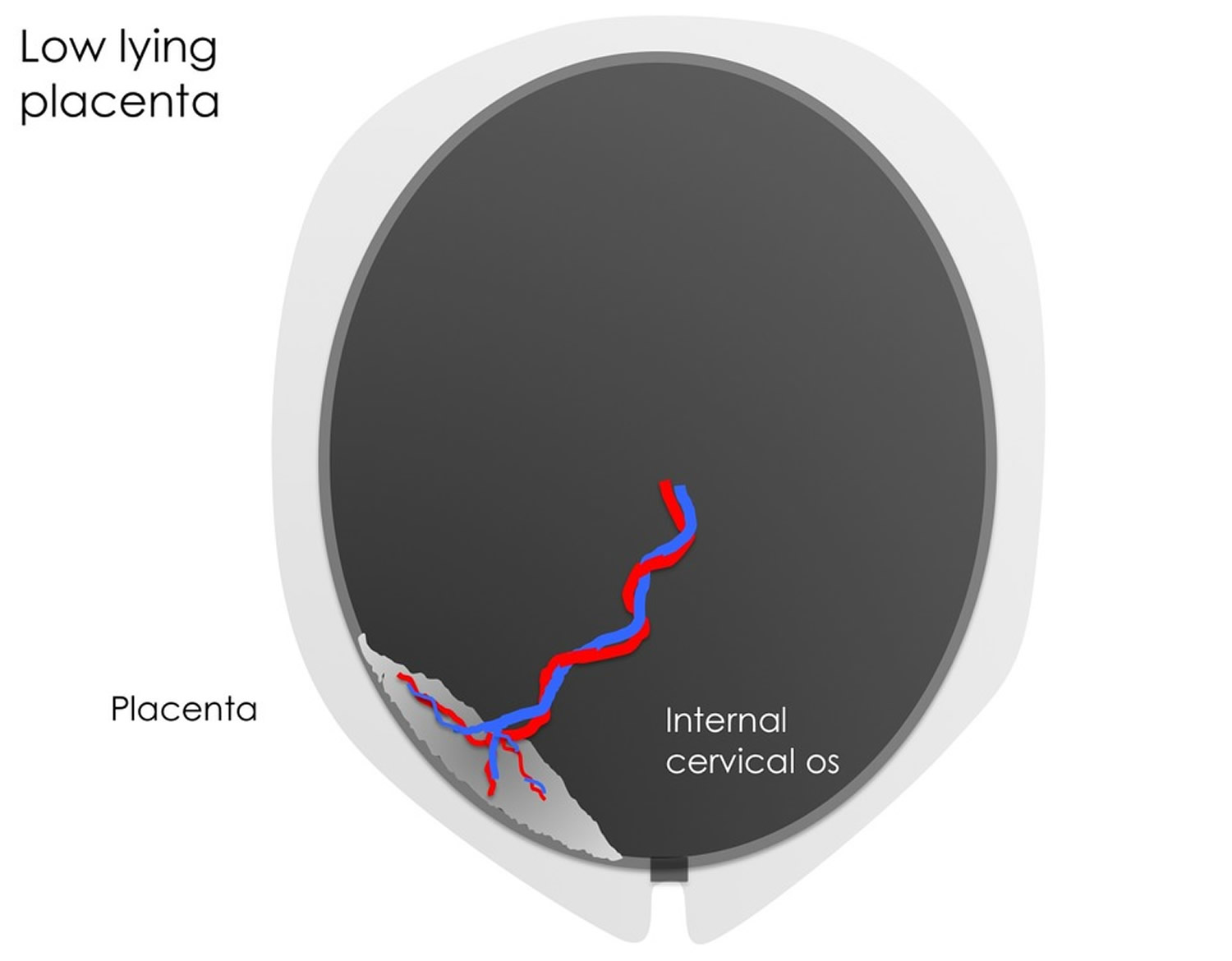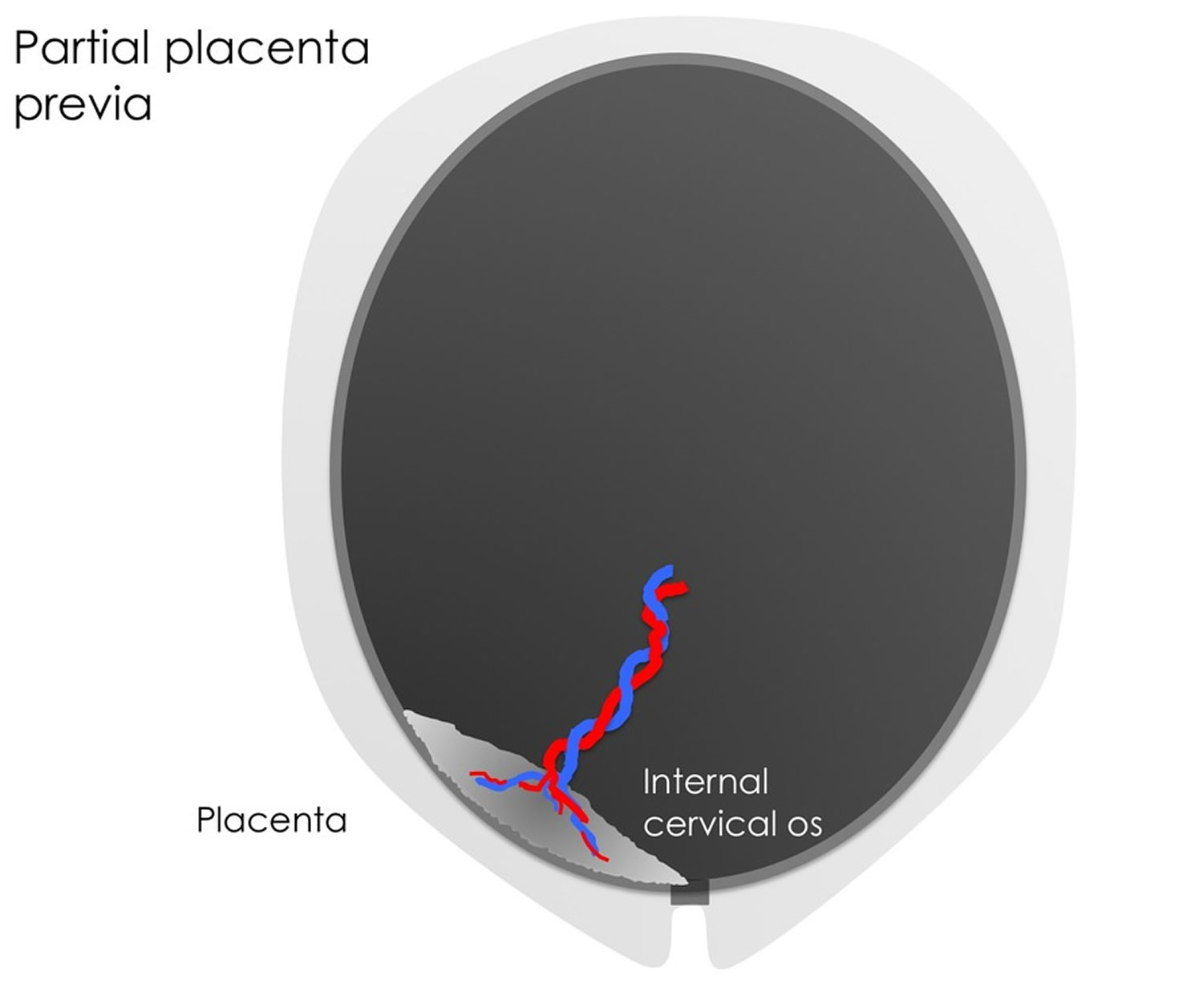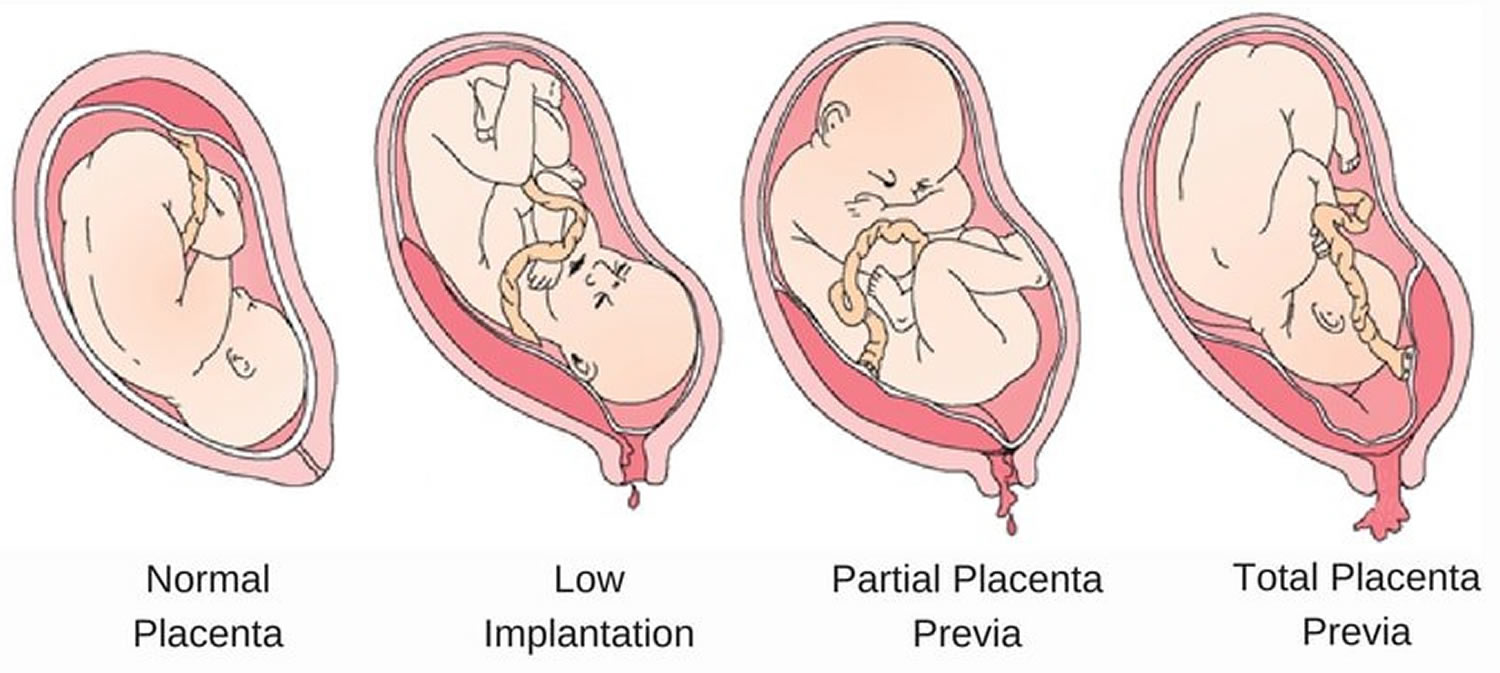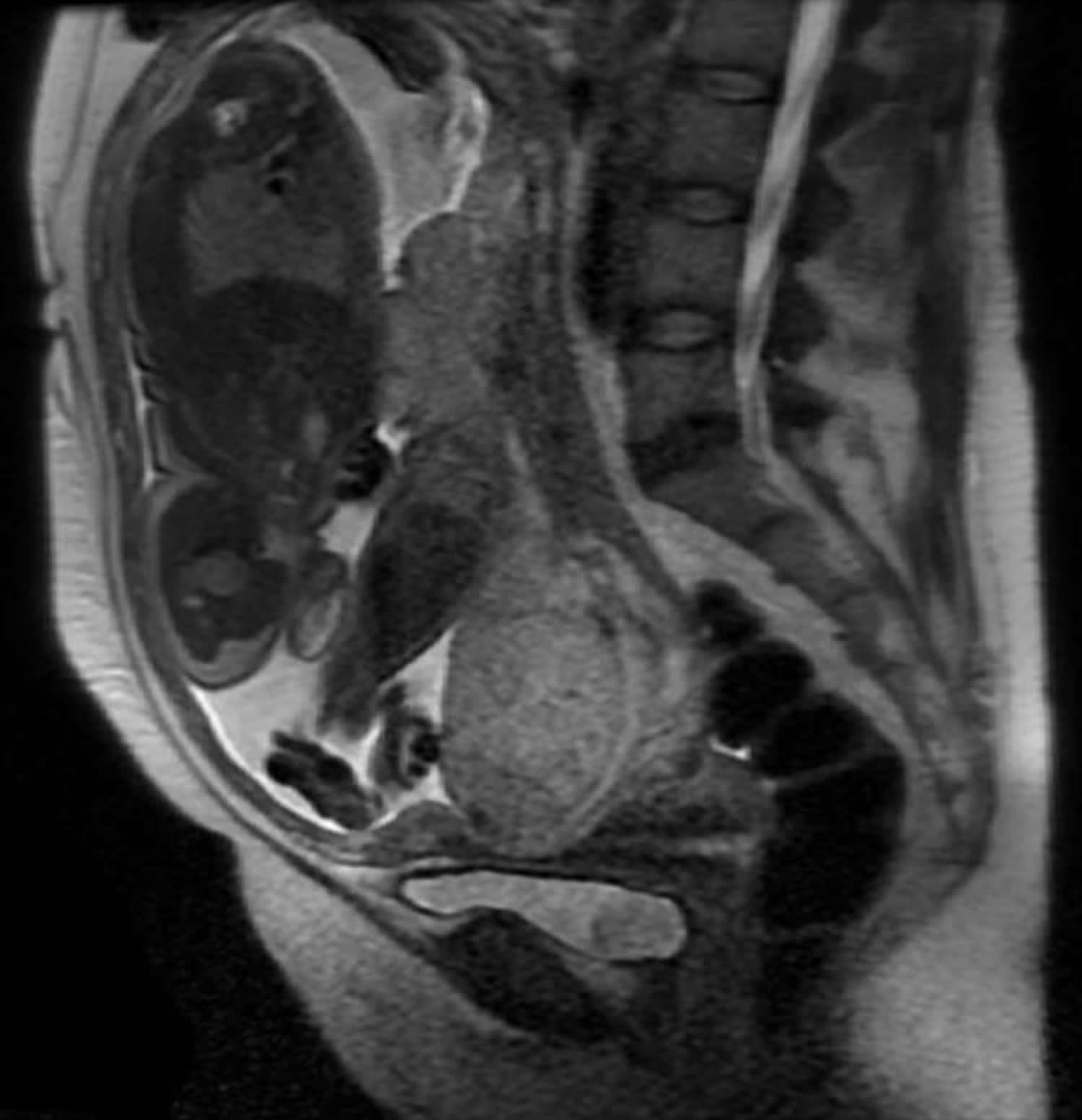Extra Placenta but No Baby at 5months Pregnant
Contents
- What is placenta previa
- What is the placenta
- What does the placenta practice?
- What happens after my babe is born?
- Placenta previa types
-
- Low-lying placenta (Class 1)
- Marginal placenta previa (Class 2)
- Partial placenta previa (Form 3)
- Complete placenta previa (Class 4)
-
- Placenta previa causes
- Risk Factors for placenta previa
- Placenta previa prevention
- Placenta previa prognosis
- Placenta previa complications
- Placenta previa signs and symptoms
- Placenta previa diagnosis
- Placenta previa treatment
-
- Coping and support
-
- What is the placenta
What is placenta previa
Placenta previa ways your placenta is lying unusually low in your uterus, side by side to or covering your cervix. The cervix is the opening to the uterus that sits at the top of the vagina. This ways that the placenta is lying either totally across the cervix (opening of the womb) or partially so. Placenta previa can cause life-threatening blood loss. The placenta (afterbirth) is the pancake-shaped organ commonly located nearly the top of the uterus that supplies your baby with nutrients through the umbilical string.
Classically patients with placenta previa present with an unprovoked, painless episode of vaginal haemorrhage. The amount of vaginal claret loss varies between minor to massive hemorrhage. Blood loss is most frequently intermittent with unpredictable recurrence.
Following an episode of bleeding, information technology is about probable that you will need to stay in hospital for a catamenia of time then that both you and your infant can be monitored closely.
Placenta previa happens in almost one in 200 pregnancies. The incidence has increased over time due to the ascent incidence of cesarean section, which is a risk cistron and improved diagnostics. While placental abruption can occur in women with no hazard factors, in that location are factors, listed below, that increment the run a risk of a mother experiencing placenta previa.
If you lot're found to have placenta previa early in pregnancy, it'south not usually considered a problem. This is because your lower uterine segment only develops fully in the 3rd trimester. This means that prior to the third trimester many placentas may appear to be located close to the cervix and are termed low lying placentas. However, as the pregnancy progresses and the lower segment develops fully, a large number (>90%) of low lying placentas detected in early pregnancy move away from the cervical opening. Just if the placenta is still shut to the cervix after in pregnancy, it tin can cause haemorrhage, which tin lead to other complications and may mean that you'll need to deliver early on. If yous accept placenta previa when it'due south time to deliver your baby, yous'll need to have a cesarean section.
If the placenta covers the cervix completely, it's chosen a complete or total previa. If placenta previa is right on the border of the cervix, information technology's called a marginal previa. (You lot may also hear the term "partial previa," which refers to a placenta that covers part of the cervical opening once the cervix starts to dilate.) If the edge of the placenta is within two centimeters of the cervix merely non bordering it, it'south called a low-lying placenta.
The location of your placenta will be checked during your mid-pregnancy ultrasound exam (usually done betwixt 16 to xx weeks) and again later if necessary.
Usually, the placenta grows into the upper part of the uterus wall, abroad from the cervix. Information technology stays in that location until your baby is born. During the terminal stage of labor, the placenta separates from the wall, and your contractions help button information technology into the vagina (birth canal). This is also called the afterbirth.
During labor, your baby passes through the cervix into the nativity canal. If you lot accept placenta previa, when the cervix begins to efface (thin out) and dilate (open up up) for labor, claret vessels connecting the placenta to the uterus may tear. This can cause severe bleeding during labor and nascency, putting you and your baby in danger.
A low-lying placenta is relatively common on the 2d trimester morphology ultrasound scan. As the fetus grows and the uterus expands, the lower uterine segment thins and grows disproportionately, such that in nigh cases the placenta is no longer depression-lying by a follow-up study (ordinarily performed at 32-34 weeks). This prospective report 1) indicates that women with a prior cesarean delivery and complete placenta previa diagnosed at second‐trimester ultrasound are less likely to have subsequent resolution of the placenta previa when compared to those without a history of cesarean commitment.
What is the placenta
The placenta is an organ attached to the lining of your womb during pregnancy.
Information technology keeps your unborn baby's claret supply split up from your own blood supply, as well as providing a link between the ii. The link allows the placenta to carry out functions that your unborn baby can't perform for itself.
The placenta is connected to your baby by the umbilical cord. Your baby is inside a pocketbook of fluid called the amniotic sac, which is made of membranes.
What does the placenta do?
Oxygen and nutrients pass from your blood supply into the placenta. From at that place, the umbilical string carries the oxygen and nutrients to your unborn baby. Waste products from the infant, such as carbon dioxide, pass back along the umbilical cord to the placenta and and so into your bloodstream, for your body to dispose of them.
The placenta produces hormones that help your babe abound and develop. The placenta likewise gives some protection against infection for your baby while it'due south in the womb, protecting it against well-nigh bacteria. Still, it doesn't protect your baby against viruses.
Booze, nicotine and other drugs can also cantankerous the placenta and can cause impairment to your unborn baby.
Towards the end of your pregnancy, the placenta passes antibodies from y'all to your baby, giving them immunity for most three months after nascence. However, it only passes on antibodies that yous already take.
Effigy i. Normal placenta and pregnancy – the placenta attaches to the wall of the uterus (womb) and supplies the baby with food and oxygen through the umbilical cord.
 Figure 2. Normal placental position
Figure 2. Normal placental position

What happens afterwards my babe is built-in?
Later on your infant is born, more contractions volition push the placenta out through the vagina.
Your midwife will offer you a medicine to stimulate your contractions and assistance push the placenta out. They'll inject the medicine into your thigh merely as the babe is built-in. It makes your womb contract then the placenta comes away from the wall of your womb. This also helps prevent the heavy bleeding some women feel.
Breastfeeding your babe as shortly every bit possible after the birth helps your womb to contract and push the placenta out.
You lot may choose to allow your body push the placenta out in its own time, which may involve some loss of claret.
After the birth, your midwife will bank check the placenta and membranes, to make sure that they're consummate and goose egg has been left behind.
If yous have a caesarean section, after your baby is born, the placenta will also be delivered.
Placenta previa types
Low-lying placenta (Form 1)
Low-lying placenta occurs when the placenta extends into the lower uterine segment and its border lies besides close to the internal os of the neck, without covering it. The term is ordinarily applied when the placental edge is inside 0.five-five.0 cm of the internal cervical os two) . Some alternatively give the term when the placental edge is within 2 cm from the internal cervical bone 3) .
It has also classified under the benign end of the spectrum of type 1 placenta previa, although some restrict the term "previa" only for the state of affairs in which the placenta covers the internal cervical bone.
Effigy 3. Depression-lying placenta

The estimated prevalence of depression-lying placenta may be every bit high every bit 10-30% of all pregnancies 4) . The majority of placentas classified as low-lying in early on pregnancy (12-14 weeks) reach a normal position on subsequent scanning later during the pregnancy due to placental trophotropism.
Transvaginal ultrasound is more accurate for evaluation of a low-lying placenta than transabdominal ultrasound 5) .
Marginal placenta previa (Form 2)
The placental tissue reaches the margin or correct on the border of the internal cervical bone, but does not cover it.
Effigy four. Marginal placenta previa

Fractional placenta previa (Grade 3)
Refers to a placenta that covers part of the cervical opening once the cervix starts to dilate.
Figure v. Partial placenta previa

Complete placenta previa (Grade 4)
If the placenta covers the the internal cervical os completely, it's called a complete or total placenta previa. In the example of a consummate placenta praevia, a cesarian section is required for commitment to avoid the risk of fetal and maternal hemorrhage.
Sometimes grades ane and 2 are termed a "minor" or "partial" placenta previa, and grades 3 and 4 are termed a "major" placenta previa six) .
Figure six. Consummate placenta previa

Figure seven. Placenta previa

Placenta previa causes
Scientists don't know what causes placenta previa. However, y'all may be at higher risk for placenta previa if:
- You fume cigarettes.
- Yous use cocaine.
- You're 35 or older.
- Y'all've been meaning before.
- You've had placenta previa in a past pregnancy.
- You're meaning with twins, triplets or more than.
- You've had surgery on your uterus, including a c-department or a D&C (dilation and curettage). A D&C is when a medico removes tissue from the lining of a woman'south uterus. Some women accept a D&C later on a miscarriage.
If you've had placenta previa in a past pregnancy, you accept a ii to 3 in 100 (2 to 3 percent) chance of having information technology again.
Associated weather with placenta previa include placenta accreta, malpresentation, preterm premature rupture of membranes, intrauterine growth brake, and vasa previa 7) .
Risk Factors for placenta previa
The cause of placenta previa remains unknown, however risk factors include:
- High parity
- Increased maternal historic period
- Uterine abnormalities
- Smoking
- Cocaine apply
- Multiple pregnancy
- Previous placenta previa
- Previous Cesarean section
- Termination of pregnancy
- Intrauterine surgery
- Maternal history of smoking
- Erythroblastosis fetalis. This occurs when the mother'south immune system attacks the blood cells of the babe. For example, a female parent who has an Rh-negative blood type who is carrying a baby with an Rh-positive claret type may take an immune response that attacks and destroys the Rh-positive claret cells of the baby.
- Assisted reproductive techniques (in vitro fertilization and intracytoplasmic sperm injection).
The increased chance of placenta previa following caesarean department is highest for the pregnancy immediately following the caesarean and decreases in subsequent pregnancies. Prior cesarean delivery is ane of the virtually important hazard factors for development of placenta previa, and the risk of placenta previa increases as a woman has more than cesarean deliveries. Afterward 1 cesarean delivery, the risk of previa is reported to be approximately ane.9%; the take a chance increases to 5.5% after ii cesarean deliveries and reaches 14.3% later on 3 cesarean deliveries 8) .
Placenta previa prevention
Scientists don't know how to forbid placenta previa. Simply y'all may be able to reduce your take chances by not smoking and non using cocaine. Yous also may be able to lower your chances of having placenta previa in hereafter pregnancies by having a c-section just if information technology's medically necessary. If your pregnancy is good for you and in that location are no medical reasons for you lot to have a c-section, it'south best to let labor begin on its own. The more than c-sections you take, the greater your risk of placenta previa.
Placenta previa prognosis
If your placenta was determined as low lying from an ultrasound browse performed prior to the third trimester of pregnancy, it is most likely that every bit the lower segment of the uterus develops fully that your placenta will move abroad from the opening of the neck.
For those women in which this does not occur, placenta previa can be responsible for bleeding from the vagina either during pregnancy, during labor or following labor. This may result in anemia, hysterectomy, a claret transfusion and/or possible infection. In the Western world, placenta previa is a rare cause of maternal mortality, approximately 0.03%.
Fetal decease is slightly higher than maternal mortality, approximately 4-8%, and is associated with pre-term nascence (fifty%) and intrauterine growth restriction. While the cause is unknown, the risk of birth defects in the fetus are doubled.
Placenta previa complications
If you take placenta previa, your health intendance provider will monitor yous and your baby to reduce the hazard of these serious complications:
- Haemorrhage. Severe, possibly life-threatening vaginal haemorrhage (hemorrhage) can occur during labor, delivery or in the outset few hours after commitment.
- Preterm birth. Astringent bleeding may prompt an emergency C-department before your babe is full term.
Placenta previa signs and symptoms
The most common symptom of placenta previa is painless bright cerise vaginal bleeding during the second half of pregnancy. Some women also have contractions. Nonetheless, not all women with placenta previa take vaginal bleeding. In fact, about i-third of women with placenta previa don't have this symptom.
See your health care provider right away if you accept vaginal bleeding anytime during your pregnancy. If the haemorrhage is severe, get to the hospital.
In many women diagnosed with placenta previa early in their pregnancies during their routine dues-natal cheque upwardly and ultrasound scan, the placenta previa usually resolves. Every bit your uterus grows, it might increase the distance between the cervix and the placenta. The more the placenta covers the cervix and the later in the pregnancy that it remains over the cervix, the less probable information technology is to resolve.
Placenta previa diagnosis
On exam, your physician will be examining you for signs and symptoms of placental previa as well as other differential diagnoses depending on your presenting symptoms. They will exist specially concerned with your vital signs, including centre charge per unit and blood pressure to appraise whether you lot are showing whatever signs of stupor.
Other than your wellness, they volition also be concerned with the wellness of your unborn kid. They volition exist interested in if your baby is moving, its heart rate and how many weeks gestation your babe is. If in that location are whatever signs of fetal compromise, active haemorrhage, uterine activity or tenderness a cardiotocograph (CTG) will exist applied for continuous monitoring.
Several blood tests will be ordered and an ultrasound may be necessary.
An ultrasound usually can find placenta previa and pinpoint the placenta'due south location. In some cases, your provider may use a transvaginal ultrasound instead.
Diagnosis might crave a combination of abdominal ultrasound and transvaginal ultrasound. Your health care provider will take intendance with the position of the transducer in your vagina so as not to disrupt the placenta or cause bleeding.
If your health care provider suspects placenta previa, he or she will avoid routine vaginal exams to reduce the adventure of heavy bleeding. You might need boosted ultrasounds to cheque the location of your placenta during your pregnancy to see if placenta previa resolves.
Even if you lot don't have vaginal bleeding, a routine, 2nd trimester ultrasound may show that y'all have placenta previa. Don't be too worried if this happens. Placenta previa found in the second trimester fixes itself in almost cases.
Ultrasound
Due to placental trophotropism, the diagnosis of a placenta previa is non commonly made before xx weeks.
During the 'routine' 18 to 21-calendar week morphology scan, the distance betwixt the lower edge of the placenta and the internal cervical os should be measured. If information technology lies within a few centimeters of the cervical os, so a echo ultrasound at ~32 weeks should be performed to ensure that the edge has migrated farther abroad.
MRI (Magnetic Resonance Imaging)
MRI is the gold standard imaging modality for the placenta and its human relationship to the cervix, although in most instances it is non required. Sagittal images all-time demonstrate the human relationship of the placenta to the internal cervical bone.
Effigy 8. Placenta previa MRI scan – MRI demonstrates a consummate placenta previa

Placenta previa treatment
Treatment depends on how far along yous are in your pregnancy, the seriousness of your bleeding and the health of you lot and your infant. The goal is to keep you pregnant equally long every bit possible. Obstetricians recommend cesarean birth (c-section) for nigh all women with placenta previa to prevent severe bleeding.
Management of the haemorrhage depends on diverse factors, including:
- The amount of bleeding
- Whether the bleeding has stopped
- How far along your pregnancy is
- Your health
- Your baby'southward wellness
- The position of the placenta and the baby
In cases where the fetus is pre-term and the bleeding is minimal, the goal is to filibuster the delivery to let for maturation of the fetus without increasing the risk to the mother. In most cases this will involve access to hospital where you and your baby can be monitored closely. Unless there is spontaneous labor of heavy sustained bleeding necessitating emergency caesarean delivery, delivery is by planned caesarean section at 37-38 weeks gestation.
If you are bleeding as a outcome of placenta previa, you need to be closely monitored in the infirmary. If tests evidence that you and your babe are doing well, your obstetrician may give you handling to attempt to keep you significant for as long as possible.
If you have a lot of bleeding, you may be treated with blood transfusions. A blood transfusion is having new claret put into your body. Your obstetrician as well may give you medicines called corticosteroids. These medicines assistance speed up development of your babe'south lungs and other organs.
Your obstetrician may want you to stay in the hospital until you give birth. If the bleeding stops, y'all may be able to go home. If y'all accept severe bleeding due to placenta previa at about 34 to 36 weeks of pregnancy, your obstetrician may recommend an immediate c-department.
At 36 to 37 weeks, your obstetrician may suggest an amniocentesis to examination the amniotic fluid effectually your baby to see if her/his lungs are fully developed. If they are, your obstetrician may recommend an immediate c-section to avoid risks of future bleeding.
At whatsoever stage of pregnancy, a c-department may be necessary if you take dangerously heavy haemorrhage or if yous and your baby are having problems.
If the bleeding becomes life threatening, resuscitation and stabilization of the female parent is the primary focus followed by delivery of the baby by emergency cesarean section.
Coping and support
If yous're diagnosed with placenta previa, you're sure to worry near how your condition volition affect y'all, your baby and your family unit. Some of these strategies might assist you cope:
- Learn about placenta previa. Having data about your condition can help ease your fears. Talk to your health care provider, research on your own and connect with other women who've had placenta previa.
- Prepare for a C-department. Placenta previa might prevent y'all from delivering your baby vaginally. Remind yourself that you and your infant'southward health are more than important than the method of delivery.
- Make the best of residue. Although you won't be confined to bed, y'all will have to take it like shooting fish in a barrel. Fill up your days past planning for your baby'southward arrival. Read well-nigh newborn care or purchase newborn necessities, either online or by phone. Or apply the time to catch upwardly on thank-you notes or other nontaxing tasks.
- Take care of yourself. Environs yourself with things that condolement you, such as good books or music yous beloved. Requite your partner, friends and loved ones suggestions for ways to help, such as visiting or making one of your favorite foods.
References [ + ]
Extra Placenta but No Baby at 5months Pregnant
Source: https://healthjade.com/placenta-previa/